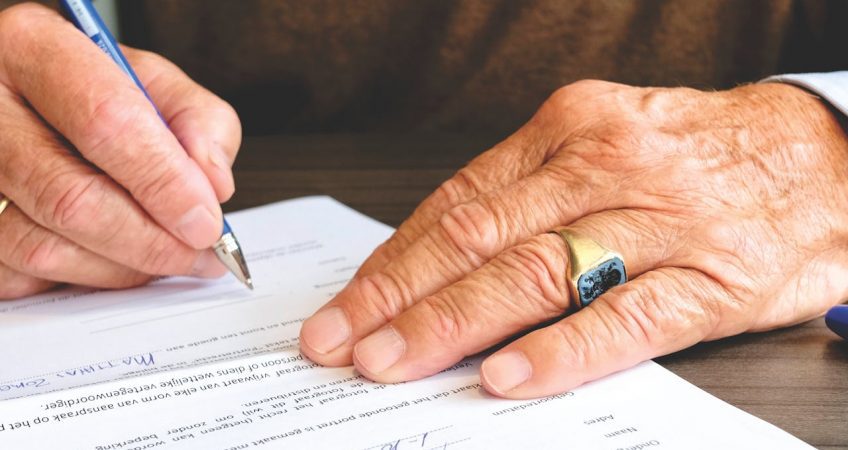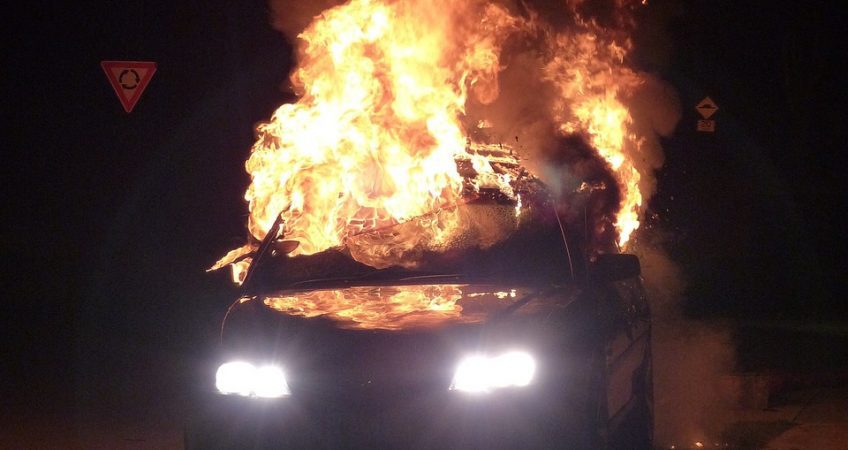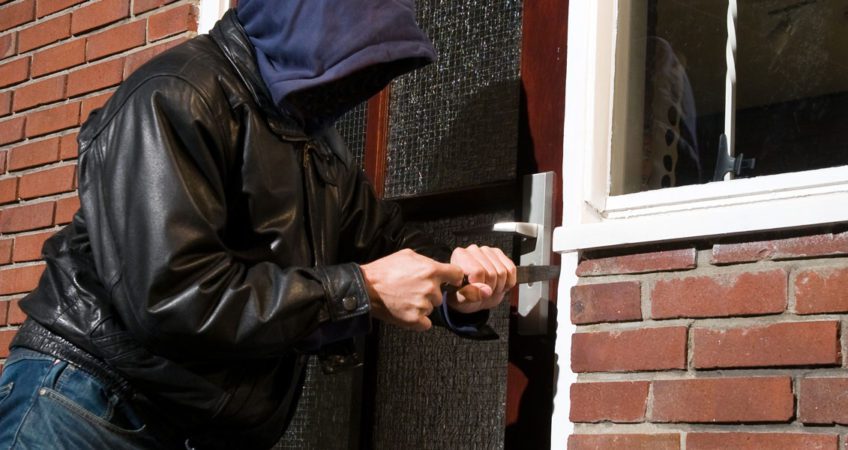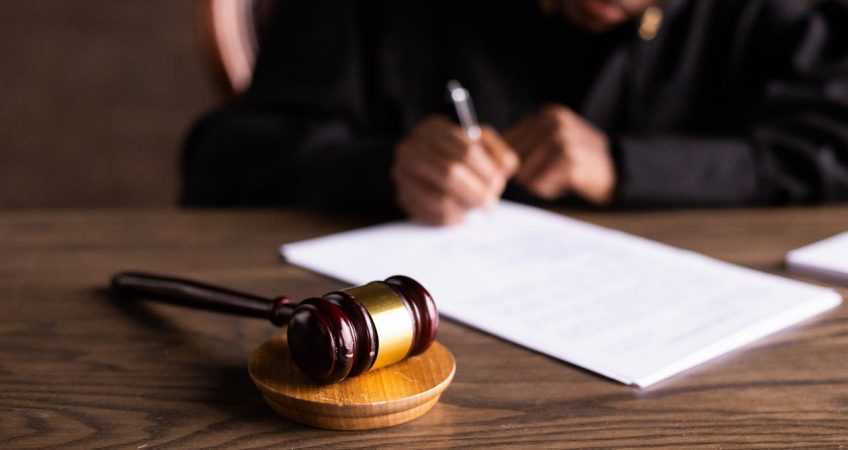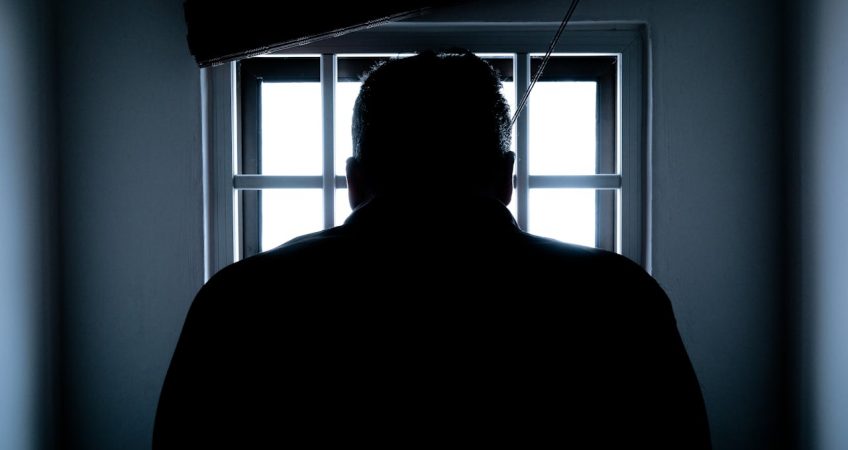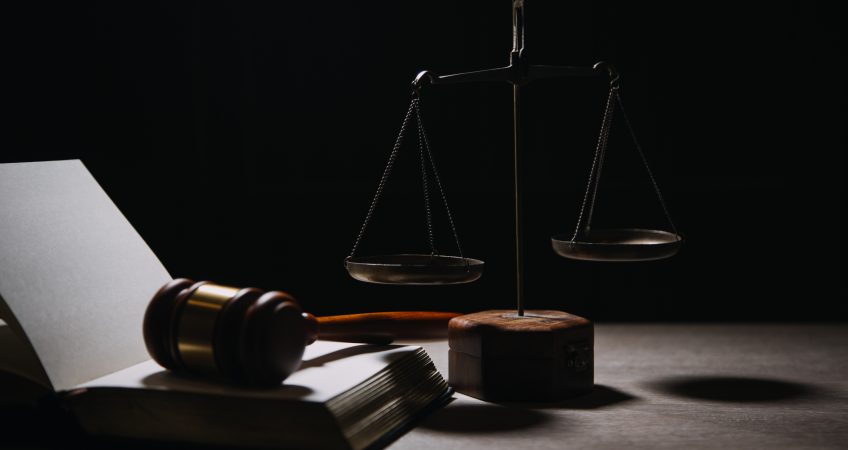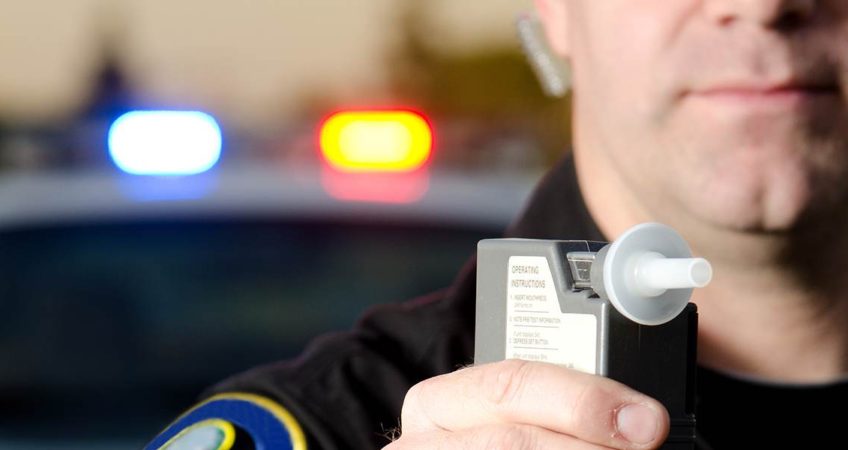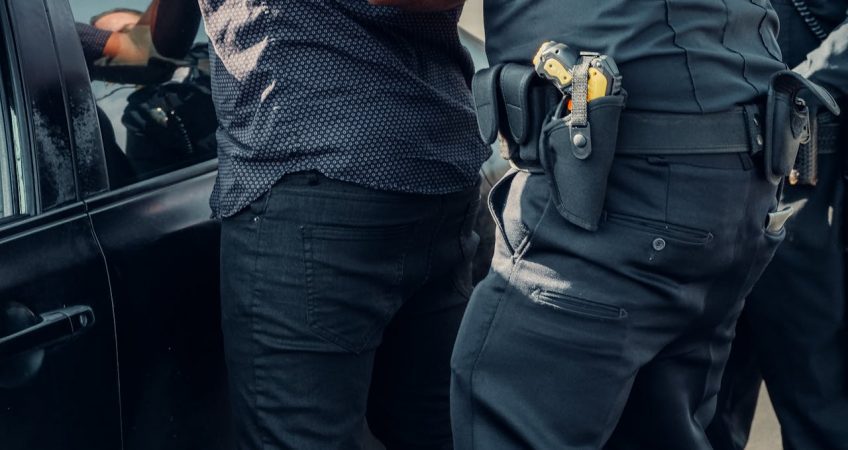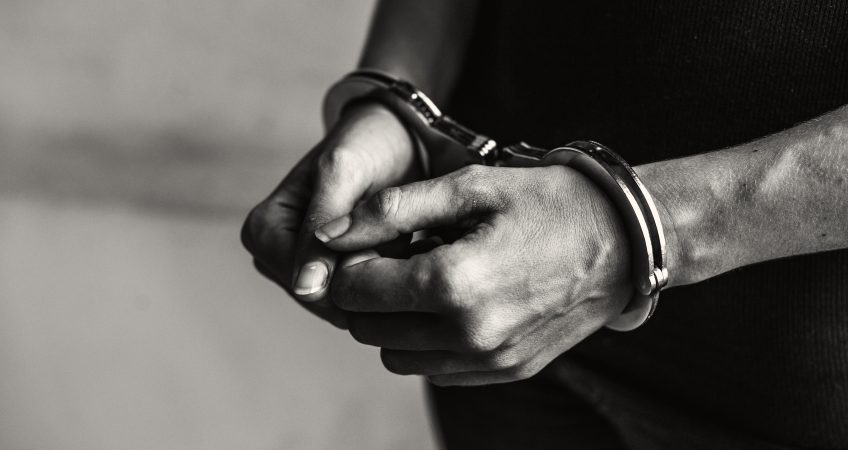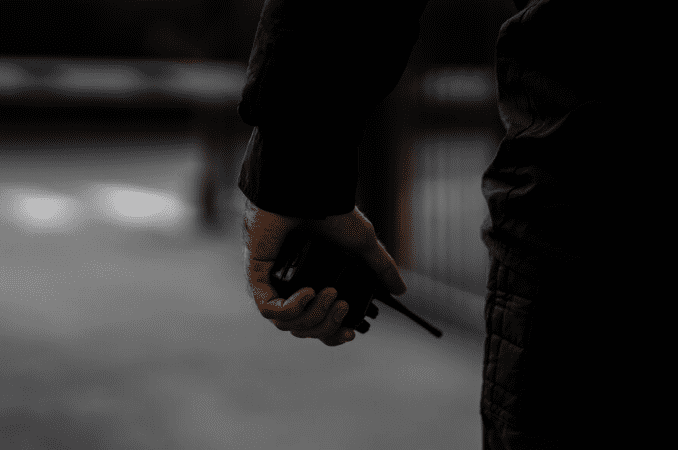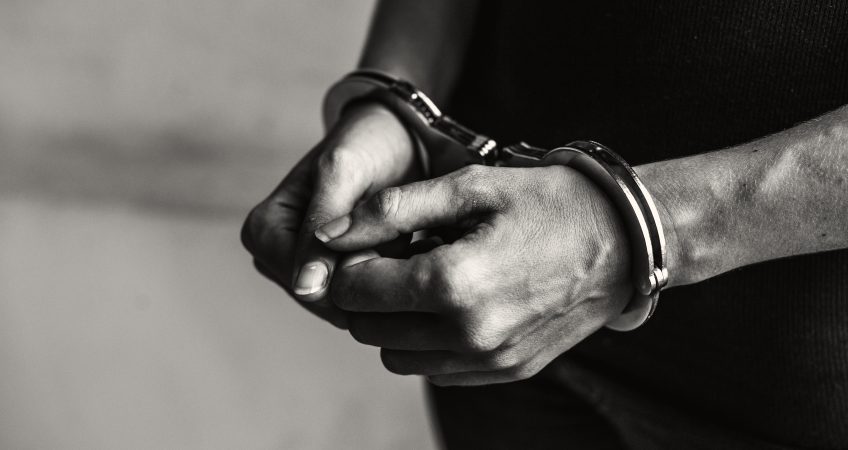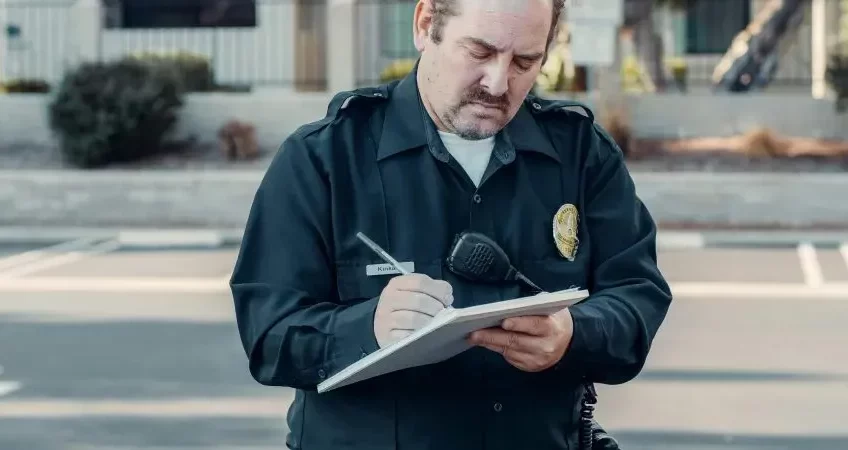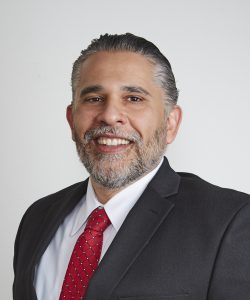Henry Cantor
September 25, 2024
Understanding Prostitution Laws in California The laws surrounding escorting and prostitution are complex, and the difference between the two lies in whether a sexual act is exchanged for money or other compensation. Both activities can involve legal and illegal aspects, but while escorting itself is generally legal, prostitution—defined as offering or engaging in sexual activity […]
Henry Cantor
September 24, 2024
Can a Petty Theft Charge Be Expunged in California? A petty theft conviction can create serious obstacles when applying for jobs, housing, or professional licenses. If you have a petty theft charge on your record, you may be wondering if it can be expunged to clear your name and give you a fresh start. Fortunately, […]
Henry Cantor
September 23, 2024
What is Arson Under Penal Code § 451? Under California Penal Code § 451, arson is defined as the willful and malicious act of setting fire to, burning, or causing to burn any structure, forest land, or property. Arson is classified as a “specific intent crime,” meaning that the prosecution must demonstrate that the defendant […]
Henry Cantor
September 20, 2024
A Motion to Revoke Probation is a legal action filed by a prosecutor or probation officer that requests the court to terminate a defendant’s probation. This typically occurs when a defendant has allegedly violated the terms of their probation, which can range from failing to complete court-ordered programs to committing new offenses. If the court […]
Henry Cantor
September 19, 2024
Understanding Penal Code § 182: What Is Conspiracy in California? Under California Penal Code Section 182, conspiracy occurs when two or more people agree to commit a crime and take an overt action to further that agreement. Conspiracy charges can apply to a wide range of offenses, from theft to murder, and often involve multiple […]
Henry Cantor
September 18, 2024
Burglary charges in California, governed by Penal Code 459, can lead to significant legal consequences, including imprisonment, fines, and a permanent criminal record. However, various defenses can be raised to fight these charges, depending on the specifics of the case. Below are several common defenses used in California burglary cases: 1. Lack of Intent to […]
Henry Cantor
September 17, 2024
White-collar crimes are non-violent offenses characterized by deception, theft, or fraud. These crimes typically occur in professional or business settings, often involving individuals in positions of trust, such as executives, managers, or financial professionals. In California, common white-collar crimes include embezzlement, money laundering, fraud, and insider trading. Unlike traditional “blue-collar” crimes, which may involve physical […]
Henry Cantor
September 16, 2024
Can You Beat an Indecent Exposure Charge in California? An indecent exposure charge is one of those accusations that can follow you forever — even if it’s your first offense, and even if the facts are more complicated than they first appear. You might be shocked to learn that a single misunderstanding, false accusation, or […]
Henry Cantor
September 12, 2024
How Is Criminal Attempt Proven in California? In California, an attempt to commit a crime is treated as a serious offense, even if the crime itself was never completed. Under California Penal Code Section 664, a person can be convicted of “attempt” when they take a direct step toward committing a crime but are unsuccessful […]
Henry Cantor
September 11, 2024
What Is the ‘Heat of Passion’ Defense? The “Heat of Passion” defense is a legal argument used in criminal cases to show that the defendant acted impulsively under intense emotional stress, rather than with premeditation. This defense is typically used in homicide cases to reduce the charge from murder to voluntary manslaughter. The key idea […]
Henry Cantor
September 10, 2024
Is Failure to Report a Crime a Criminal Offense in California? In California, the general rule is that citizens are not legally required to report all crimes they witness. Unlike some other states, California law does not impose a broad duty on individuals to report crimes simply because they have observed them. For instance, witnessing […]
Henry Cantor
September 9, 2024
How a California Criminal Defense Attorney Can Help Navigating the criminal justice system can be overwhelming, especially when facing serious charges. A California criminal defense attorney plays a crucial role in helping clients understand the complexities of their legal situation. This includes explaining the charges they face, the potential consequences, and the legal procedures involved. […]
Henry Cantor
September 6, 2024
Temple City, CA – Los Angeles County District Attorney George Gascón announced that Diego Santoscruz has been charged with two counts of murder following a fatal DUI crash that resulted in the deaths of a mother and her 10-year-old daughter. The tragic accident occurred on August 17, 2024, when Santoscruz allegedly drove under the influence […]
Henry Cantor
September 5, 2024
Redlands, CA – The San Bernardino County District Attorney’s Office announced today that Michael Royce Sparks has been charged with two counts of murder following the deaths of his neighbors, Stephanie and Daniel Menard, who were reported missing from their home at the Olive Dell Nudist Ranch in late August. The couple’s bodies were discovered […]
Henry Cantor
September 4, 2024
Los Angeles, CA – Los Angeles County District Attorney George Gascón has announced charges against three men—Juan Gonzalez, Dion Hill, and Isaiah Rankins—in connection with a home invasion robbery that took place in Sherman Oaks on August 26, 2024. The defendants allegedly broke into a home while a woman was present and stole luxury handbags […]
Henry Cantor
September 3, 2024
Los Angeles, CA – Steven Pilar, a 47-year-old former elementary school teacher from La Puente, has been indicted on federal charges involving the receipt and possession of child sexual abuse material (CSAM). Pilar was arraigned today in the United States District Court in Los Angeles, where he faces four counts related to the alleged offenses. […]
Henry Cantor
September 2, 2024
Key Situations Requiring Probable Cause in California Probable cause is a fundamental legal requirement in California, ensuring that law enforcement actions are justified and based on a reasonable belief that a crime has been committed. This standard is necessary in several critical scenarios, including arrests, searches, and seizures. For an arrest, probable cause means that […]
Henry Cantor
August 30, 2024
Arrest Procedures in California An arrest signifies a critical moment when law enforcement takes control of an individual, restricting their freedom to leave. This action is the beginning of the formal legal process in which a person is taken into police custody. While handcuffs or other restraints may be used, their application depends on the […]
Henry Cantor
August 29, 2024
What Is an Infraction? An infraction under California law is the least serious type of offense, typically involving minor violations of statutes, regulations, or ordinances. Infractions are not classified as criminal offenses, meaning they do not carry the same severe consequences as misdemeanors or felonies. Common examples of infractions include traffic violations like speeding or […]
Henry Cantor
August 28, 2024
What Is a Felony in California? Under California law, a felony is a serious criminal offense that carries severe penalties, including imprisonment in state prison, significant fines, and other long-lasting consequences. Felonies are distinguished from misdemeanors and infractions by the severity of the crime and the corresponding punishment. A crime is classified as a felony […]
Henry Cantor
August 27, 2024
The Impact of a DUI on Your CDL in California A DUI conviction in California significantly affects your ability to obtain or regain a Commercial Driver’s License (CDL). If you are convicted of a DUI, whether while driving a commercial vehicle or your personal vehicle, your CDL privileges will be suspended. For a first DUI […]
Henry Cantor
August 26, 2024
Why You Need to Know About First-Degree Murder Charges in California First-degree murder in California is defined as an unlawful killing that is both willful and premeditated. This means that the person accused planned the act and carried it out with the intent to kill. It is the most serious form of homicide under California […]
Henry Cantor
August 23, 2024
The Role of Evidence in Criminal Defense Evidence is the cornerstone of any criminal defense case. It plays a crucial role in determining the outcome, as it can either support the prosecution’s claims or bolster the defense’s arguments. In criminal defense, the strength and credibility of the evidence presented often make the difference between a […]
Henry Cantor
August 22, 2024
Understanding Expungement in California Expungement, in the context of California law, refers to a legal process through which an individual’s criminal conviction is either dismissed or set aside. Specifically, under California Penal Code Section 1203.4, a person who has successfully completed probation, or meets certain other criteria, can petition the court to have their conviction […]
Henry Cantor
August 20, 2024
Los Angeles – Carlos Corona, a South Los Angeles resident, was sentenced to 87 months in federal prison for masterminding a large-scale bank fraud scheme that defrauded banks and credit unions out of over $2.7 million. The operation, which involved soliciting bank account holders through Instagram, relied on depositing stolen checks into the accounts of […]
Henry Cantor
August 19, 2024
SANTA MONICA, CA – A 34-year-old man, Erik Morgan, was arrested and taken into custody following an unprovoked assault on a Santa Monica Big Blue Bus on July 29, 2024. The Santa Monica Police Department (SMPD) responded to the incident, which occurred on the 3200 block of Santa Monica Boulevard. The victim, who was attacked […]
Henry Cantor
August 16, 2024
LOS ANGELES, CA – Two Mexican nationals were each sentenced to 10 years in federal prison for their roles in a scheme to distribute over 1 million fentanyl pills in the Los Angeles area. The sentencing took place on August 13, 2024, before United States District Judge Stanley Blumenfeld Jr., marking a significant development in […]
Henry Cantor
August 15, 2024
LOS ANGELES – Five individuals, including two licensed doctors, have been charged in connection with the ketamine overdose that led to the death of actor Matthew Perry in October 2023. The charges, detailed in an 18-count superseding indictment unsealed on August 13, 2024, reflect a coordinated effort among the defendants to illegally supply Perry with […]
Henry Cantor
August 15, 2024
LAGUNA BEACH, CA – David Robert McDonnell, a 74-year-old businessman from Laguna Beach, has pleaded guilty to embezzling nearly $6 million from the estates of wealthy clients. The plea was entered on August 12, 2024, at the federal courthouse in Santa Ana, marking the conclusion of a scheme that spanned several years and defrauded multiple […]
Henry Cantor
August 14, 2024
LOS ANGELES, CA – Four former law enforcement and military officers are facing serious federal charges following their alleged involvement in a sham raid aimed at extorting a man in Irvine, California. The four individuals, including two former Los Angeles County Sheriff’s deputies, have been charged with conspiracy to commit extortion, attempted extortion, conspiracy against […]
Henry Cantor
August 13, 2024
PASADENA, CA – A 33-year-old man, Juan Pablo Flores, has been charged with attempted murder following a vicious attack on a woman at the Allen Metro Station in Pasadena. The incident, which occurred on the morning of August 7, 2024, has shocked the community and raised serious concerns about the safety of public transit systems. […]
Henry Cantor
August 8, 2024
Hollywood actor Gabriel Olds, was arrested on August 7, 2024, following serious accusations of sexual assault. The Los Angeles Police Department (LAPD) charged the 52-year-old with seven felony counts, including multiple counts of forcible rape, rape of an unconscious person, sodomy by force, assault with intent to commit rape, and inflicting injury on a partner […]
Henry Cantor
August 8, 2024
On August 7, 2024, Freddie Lee Trone, 42, was convicted for the murder of rapper PnB Rock, whose real name was Rakim Hasheem Allen. The murder occurred on September 12, 2022, at Roscoe’s House of Chicken & Waffles in South Los Angeles. In addition to the murder charge, Trone was convicted of two counts of […]
Henry Cantor
August 7, 2024
LOS ANGELES – Federal and local law enforcement officials have unsealed indictments from a grand jury against 37 members and associates of the South Los Angeles-based Florencia 13 (F13) street gang. These indictments mark a significant move to dismantle the gang’s criminal operations. The charges include fentanyl trafficking, extortion, and three murders, one of which […]
Henry Cantor
August 2, 2024
On July 31, 2024, Sergio Macias, also known as “Checho,” was arrested on a nine-count federal indictment for a series of armed carjackings in Los Angeles County. This arrest follows a three-week crime spree from November 15 to December 9, 2023, involving Macias and three other defendants: Michael Anthony Fisher (“Ghost”), Andres Silva Cerrillos (“Ruler”), […]
Henry Cantor
August 1, 2024
Los Angeles County District Attorney George Gascón announced on July 30, 2024, that Jeffrey Chao has been charged with allegedly stealing and hiding his 15-year-old daughter and falsely reporting her as missing. The incident began on the evening of July 16, when Chao reported his daughter missing from Monterey Park. According to his report, she […]
Henry Cantor
July 26, 2024
What is the Burden of Proof in Criminal Cases? The burden of proof is a fundamental principle in the criminal justice system that determines the level of evidence required to prove a legal claim or charge. In criminal cases, the burden of proof lies with the prosecution, meaning it is the prosecutor’s responsibility to present […]
Henry Cantor
July 24, 2024
On July 10, an indictment was unsealed charging four men from Los Angeles County with a series of armed robberies. Charles Christopher (24, Compton), D’Angelo Spencer (26, South Los Angeles), Jordan Leonard (25, Torrance), and Tazjar Rouse (22, Hollywood) face multiple federal charges. These include conspiracy to interfere with commerce by robbery, interference with […]
Henry Cantor
July 24, 2024
What Are the Legal Consequences of a DUI in California? Driving under the influence (DUI) in California carries severe legal consequences. Penalties for a first-time DUI offense may include fines ranging from $390 to $1,000, mandatory attendance at DUI school, probation, and a license suspension for six months. Additionally, you may face up to six […]
Henry Cantor
July 23, 2024
What Is a Federal Plea Agreement? A federal plea agreement is a legal contract between a defendant and the federal government in which the defendant agrees to plead guilty to one or more charges. In return, the government may offer certain concessions, such as reducing the number of charges, recommending a lighter sentence, or dismissing […]
Henry Cantor
July 22, 2024
What Does It Mean to Evade an Officer in California? In California, evading an officer involves a driver deliberately attempting to flee from a peace officer who is pursuing them. According to California Vehicle Code Section 2800.1, a person is guilty of evading if they, while operating a motor vehicle, willfully flee or attempt to […]
Henry Cantor
July 19, 2024
What Constitutes a Marijuana DUI in California? In California, a marijuana DUI occurs when a driver operates a vehicle while under the influence of marijuana, impairing their ability to drive safely. Unlike alcohol, there is no specific legal limit for THC (tetrahydrocannabinol), the psychoactive component of marijuana, in a driver’s system. Instead, the law states […]
Henry Cantor
July 16, 2024
Jestice James has been charged with the murder of her three-year-old twin sons, Josiah and Jestine James. The twins were allegedly exposed to drugs laced with fentanyl, a highly potent synthetic opioid. Los Angeles County District Attorney George Gascón announced the charges, emphasizing the growing concern over the impact of fentanyl on young children. The […]
Henry Cantor
July 12, 2024
What is Deferred Entry of Judgment? If you have been charged with a substance abuse-related crime, you may be wondering what Deferred Entry of Judgment is and how it can benefit you. DEJ is a legal process in California that allows defendants to avoid a formal conviction by successfully completing a probationary period. This option […]
Henry Cantor
July 10, 2024
On the afternoon of July 2, 2024, a tragic armed robbery targeting New Zealand tourists Patricia and Doug McKay occurred at the upscale Fashion Island Mall in Newport Beach, California. The couple, visiting from New Zealand, were accosted by a group of armed robbers shortly after finishing a shopping trip. The incident resulted in the […]
Henry Cantor
July 9, 2024
On July 1, 2024, Gustavo Adolfo Aldana-Martinez, 57, of Pico Rivera, was sentenced to 48 months in federal prison for his role in a money laundering conspiracy that facilitated the movement of over $15 million in drug proceeds from the United States to international drug trafficking organizations. The sentencing was handed down by United States […]
Henry Cantor
July 4, 2024
On November 13, 2020, at around 8 p.m., officers responded to a shooting incident in front of a family home on the 1500 block of West 145th Street in Gardena, California. Upon arrival, they found a 29-year-old man suffering from multiple gunshot wounds while seated in a parked car with his brother. According to the […]
Henry Cantor
June 26, 2024
Understanding California’s Self-Defense Laws — And When They Can Lead to Charges Self-defense is a fundamental legal right in California, allowing individuals to protect themselves from imminent harm. However, the use of force in self-defense must meet specific legal criteria to avoid criminal charges. Understanding these nuances is crucial, as improper use of force or […]
Henry Cantor
June 25, 2024
The penalty for underage drinking in California can include fines, a suspended driver’s license, community service, and even a criminal record. Underage drinking is defined as the consumption, possession, or purchase of alcohol by anyone under 21, and California enforces these laws strictly to help prevent alcohol-related accidents and long-term harm to young people. If […]
Henry Cantor
June 24, 2024
First-time offenders often have access to various programs aimed at rehabilitation rather than punishment. These programs can lead to reduced charges or even dismissal of charges upon successful completion. Understanding these options is critical for minimizing the long-term impact of a criminal charge. California law provides several options for first-time offenders, including diversion programs, probation, […]

